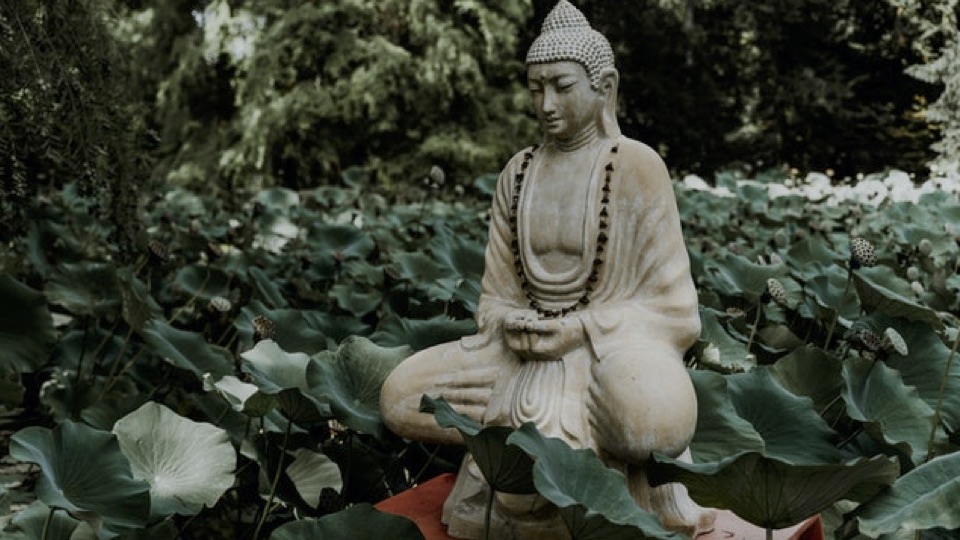In modern times, increased environmental awareness and sustainability might be attributed to the popularity of Minimalism. But is it really just a “trend”? It’s not a new concept; it’s been around for a while. Buddhists around the world are well-versed in Minimalism as many Buddhist principles and practices resonate with it.
Minimalism-as-lifestyle advocates living a simple life: spending sensibly, owning less, and finding value in things we already possess. It calls for a shift in the mindset. Where it concerns livelihood and expenditure, Buddhist ideology also focuses on creating the “right” balance for a happier and more fulfilling life.
Prince Siddharta Gautama was the founder of Buddhism who lived in India around the 5th century B.C. He had a comfortable life, but the sufferings of those around him weighed heavily. He left his wealth and family to search for enlightenment as a spiritual ascetic. After years of practice and learning from his teachers, Prince Siddharta at the age of 35, gained enlightenment and thereafter was called the “Buddha.”
The Middle Path
Buddha spent the rest of his life preaching the “middle path” that deals with avoiding two extremes of life – overindulgence and severe asceticism. Overindulgence, according to Buddha, starts with being clingy and soon becomes a habit. Severe asceticism, on the other hand, doesn’t serve much purpose as it unnecessarily suppresses our wants and doesn’t deepen our understanding of life. Minimalism, like the Buddhist “middle path,” is about finding the right balance-removing the excess and only keeping the things that truly serve their purpose in our life.
Happiness beyond Possessions
The more we possess, the more we worry about losing them. Conspicuous consumption only leads to a feeling of emptiness. How much more can one buy after all? According to Buddhism, happiness in life can be limitless provided that we are mindful of our own needs and desires. Being present in the moment, resting in the reality of the Now, can help us understand what we truly need.
Non-Attachment
Evaluating what is truly essential for us is the essence of Minimalism. It’s about being mindful and consciously developing the ability to have more joyful experiences in life, with lesser attention to possessions.
We have been conditioned to believe that our emotional security is a function of our attachments to things, people, views, and also to the idea of self. According to Buddhist ideology, “non-attachment” –avoiding being clingy to belongings, wealth, reputation, and status — can help us feel more secure in life. This happens because, with detachment, the mind frees itself from all the unwanted mental experiences and complexities that come with being “attached” to things.
Contentment
Contentment is about having inner peace which stems from being grateful and expressing gratitude for where we are in life. Focusing on the “lack” of things only causes discontent. In the age of fast fashion and social media, talking about “contentment” seems a bit off, but then we are also aware of how FOMO (fear of missing out) leaves us feeling inadequate.
Buddha said, “Contentment is the greatest wealth of all.” That mindset helps us overcome hindrances like desire, ill will, laziness, restlessness, and doubt that often cause grief and misery. Buddhist philosophy views things/possessions with impermanence. Tied to sensory fulfillment, our sense of accomplishment is often temporary. Being aware of the transitory nature of our desires and engaging with things more consciously, can help us be happier in life.
Trendy or not, in a consumer-centric culture adopting a minimalistic lifestyle can be difficult. With so many varying opinions on Minimalism, defining what it is and what it isn’t, understanding Minimalism can be very confusing for those interested in practicing it as a lifestyle.
Both Buddhism and Minimalism ideologically believe in the idea of “less is more,” which, when practiced consciously, leads to more freedom and control over life.
-Rachna Singh
Photo by David Bartus from Pexels


This is the first time I’ve read about minimalism and buddhism. It’s really interesting. Looking forward to learn more. Thank you!